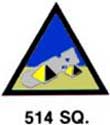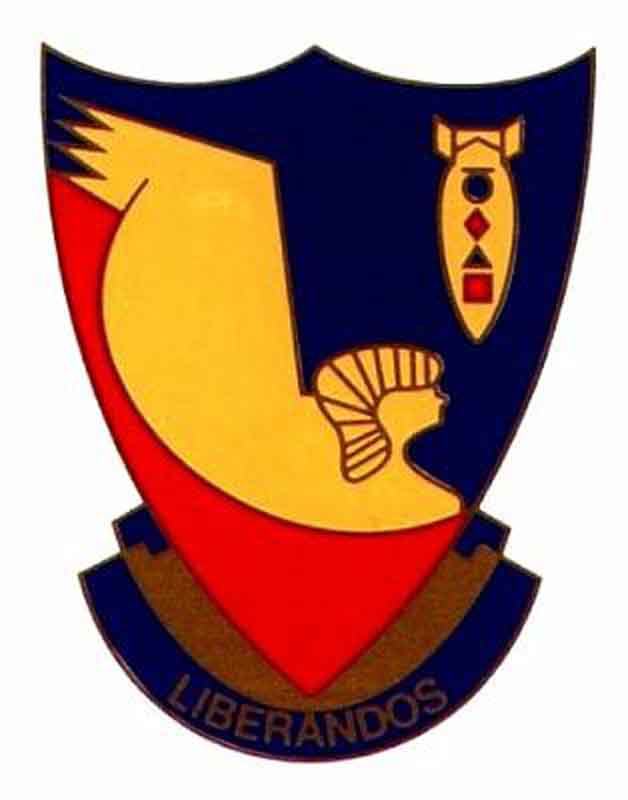Whitney Cushing
Whitney Cushing was an H2X operator with the 514th squadron. This is his story:
It was an awesome feeling looking at the little H2X screen and picking up a coastline 100 miles away and the winding Danube and picking up Budapest and even using the radar volume control to pick out the residential Buda section from the industrial Peste It all started for me as a radar navigator after I finished my combat navigation training with a B-24 crew piloted by Robert Blair at Clovis, Pueblo, and Herington, Kansas. Then came the focus on navigators, secret briefing, a strange blackout train ride that ended up at Langley Field where I was one of the first to get training as a radar navigator and be introduced to a B-24 with a big white cylinder that was cranked down from the underbelly after we were air borne. That was also when I first met a 376th combat hero, K.K. Compton who was very high on the radar ships.
After submarine patrol in Virginia and the Caribbean and an exciting and scary non-stop from Fortaleza to Dakar, I joined the 376th in North Africa. Next, it was off to southern Italy and San Pancrazio. Because of the shortage of "Mickey" planes---we radar navigators were called “miracle men" and "Mickey men" which sounded more like a Disney character than a person of substance--I was shipped out to fly for the 449th, 450th Cottontails, and 451st before permanent assignment to the 376th. A retired air force general whom I met at Patrick AFB in an AFA reunion told me that the "radar pathfinder planes turned the war against Hitler because we stopped losing ships and targets in bad weather". Hitler and Goering gave the Iron Cross to anyone who knocked down a Mickey ship, and I can attest to the fact that a lot of pilots had gray hair flying the belly bare planes and getting a lot of 12 o'clock level and high and low attacks from the Messerschmitt and Focke Wulfes.
In my 50 missions, I flew with a lot of different crews and was either in lead or deputy lead ships. We were on our own in the air as far as the radar was concerned. If the H2X broke down, we couldn't fix it, and nobody in the plane was able to either. We watched the scanner, turned the dials, and interpreted the results. If flak or shell knocked out the radar ball, we had to fall back on dead reckoning. On a mission to Ploesti (had three rides there including the first high level) the radar went out coming off the target, and I blacked out mentally while still apparently functioning on oxygen. When the pilot asked for an ETA to the Yugo coast, I came to and noticed that I hadn't put anything in the log for two hours. We were letting down around 15,000, and I tried desperately to find myself in the holes between the clouds, thought I spotted a town on a railroad that was north of the right course, corrected the pilot to turn left, and at 12,000 feet, we flew over a German airfield in Albania and the flak came up. We were the lead ship, and it was my fault, so I had to take a plane up to Bari after I landed to explain. It was about my 46th mission, and that was the last time I flew a lead radar ship.
I was ready to turn in my wings and be a ground man, but Colonel Beir not only convinced me to keep flying but also made me a waist gunner to Athens and assigned me as navigator to a good crew to finish my missions. The mission I sweated the most was my 50th to Vienna and Bratislava. While the rest of the 47th wing went to Vienna with the P-51's, we were the guinea pigs without escort who went to Czechoslovakia and fortunately fooled the Jerries. Standing on the catwalk with open bomb bay doors over the Yugo mountains, we were ready to bail after we had a hit and an engine on fire crossing the coast. The hero was the engineer who put out the fire and we got back safely after two bailed out.
The biggest disappointment was seeing my school boy friend from St. Albans, Vermont, a first pilot John Lawrence Brown get shot down on his first mission with his own crew over Romania. I saw six chutes disappear in the smoke and clouds, and the Liberator go into a spin with the tail section on fire. I don't know how he managed it~ but he got out of the plane~ broke a leg landing in a field~ was in a German hospital where they made sure he wouldn't fly again~ and underwent several operations at Walter Reed before they cut off the leg.
The most pleasant experience during my tour was the R&R on Capri where I stayed with an Italian countess in her cliffside villa, and she encouraged me to draw, something I had done since a child but never had any support from the family. I thought my art career would have a short life when one day sketching alone in a field on Ana Capri, on the top of the island an ME 109 went from a speck high in the blue to a diving demon in a few seconds, and I was too scared to move. After scaring the shit out of me, he pulled up in a beautiful half roll, and I could see the grinning face of the pilot who was probably saying~ "I'll bet I scared the shit out of that Yank". I went on to study art under the GI Bill and have had my studio in Palm Beach for over 30 years. Any visiting Liberando gets a free vino and portrait sketch.


The website 376bg.org is NOT our site nor is it our endowment fund.
At the 2017 reunion, the board approved the donation of our archives to the Briscoe Center for American History, located on the University of Texas - Austin campus.
Also, the board approved a $5,000 donation to add to Ed Clendenin's $20,000 donation in the memory of his father. Together, these funds begin an endowment for the preservation of the 376 archives.
Donate directly to the 376 Endowment
To read about other endowment donation options, click here.
Reunion
NOTE change in the schedule !!
DATES: Sep 25-28, 2025
CITY:Rapid City, SD
HOTEL: Best Western Ramkota Conference Hotel; 2111 North LaCrosse St., Rapid City, SD 57702; 605-343-8500
Click here to read about the reunion details.



















